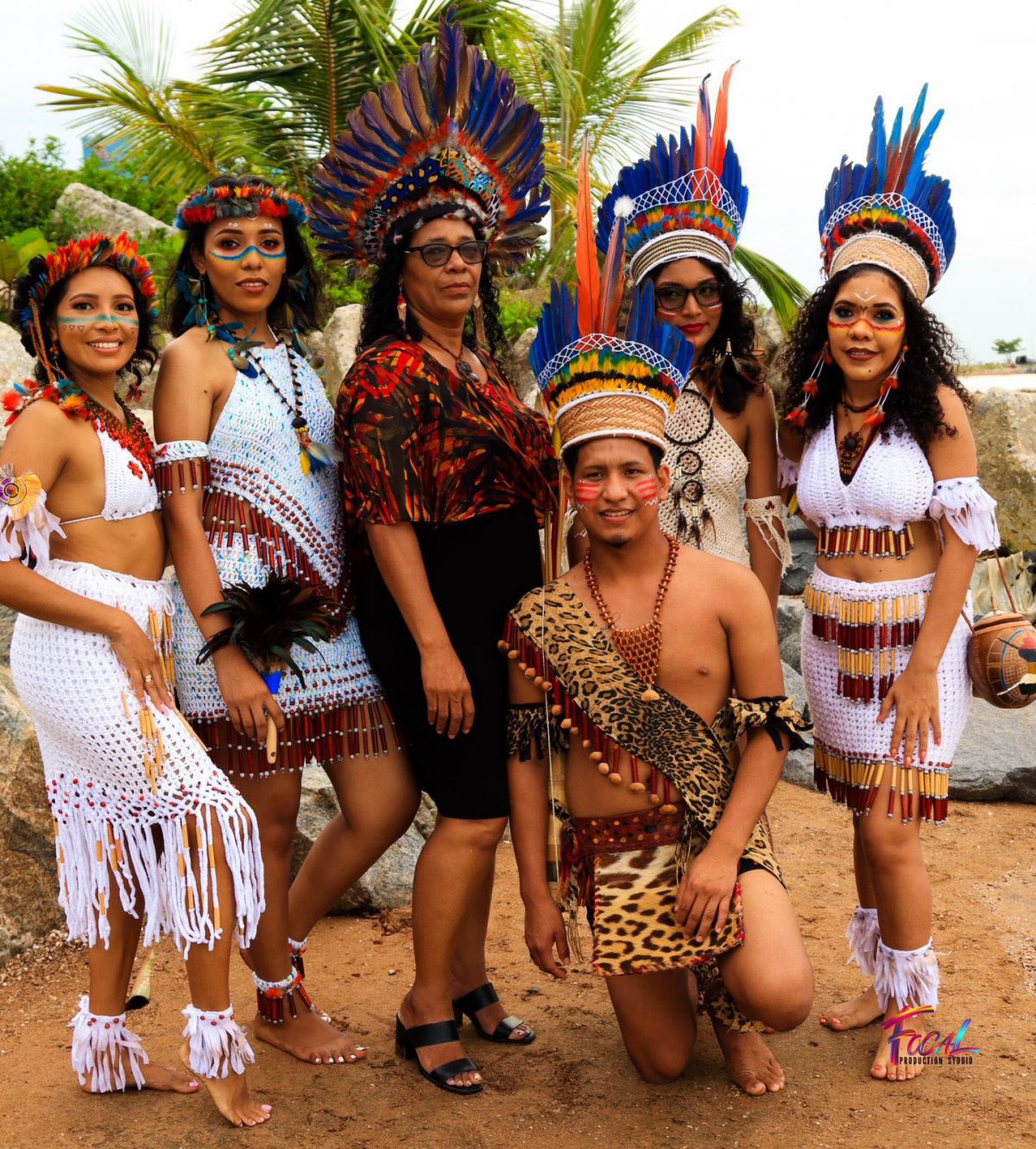Heritage Month never fails to stir the creative passion in Natasha David, much more vigorously than at other times of the year. Arguably one of Guyana’s most skillful Amerindian creative artists, her pieces, whether these be clothing, cuisine, or conventional craft, grab you with both their creativity and their seemingly flawless finish; so that while her behaviour bespeaks an inherently introverted persona, her ‘voice,’ unquestionably, reposes in the eye-catching nature of her work.
Once you get into a ‘sit down’ with Natasha you are rewarded for your patience with her introverted nature. She is responsive only after she has become aware that you have a genuine interest in what she has to say. Once she gets going you are not inclined to disengage.

It is the contrast behind her instinctively introverted nature, on the one hand, and her passion for regaling you with stories about the creative depths of the Amerindian culture, on the other, which may initially appear to be baffling as you have no choice but to follow where she leads. In the course of conversation, she makes you listen as much with your eyes as with your ears, drawn as you become to the ‘crafty’ body adornment that she never fails to ‘trot out’ to accessorise her clothing.
When we spoke earlier this week the Stabroek Business’ mission was to canvass her opinion on the Heritage Month agenda. Her responses are preceded by thoughtful facial expressions. When they eventually come, they arrive with a baffling lack of fussiness but, nonetheless, with a passion that is transfixing.
Natasha believes that Heritage Month can do more to cause the various communities to feel an equal sense of belonging. If she does not say it outright her body language and what, sometimes, are her fixed stares, speak for her.
The acknowledgement of Amerindians through what they have to offer, culturally, is still, as she appears to see it, too half-baked, too confined to routines like Heritage Month and, she suggests, set in an organisational framework that appears to be daubed with generous measures of bureaucratic patronage. Here she appears to suggest that paying homage to heritage should derive from an appreciation by ‘the peoples’ not the bureaucrats.

Heritage Month, she believes, too, has to appear less patronizing, less led from the coast, and less embedded within an organisational setting in which, historically, it has been government rather than the Amerindians in their communities that set the Indigenous agenda. She believes that Heritage Month could be far more meaningful if its presentation could be less ‘wooden’, less set against a backdrop crafted by its urban organisers.
These days, her bona fides as one of the finest known creative minds in the Indigenous craft sector would appear to have impelled her to ‘change gears,’ to expand the shockingly limited frontiers of the coastal understanding of aspects of the Amerindian way of life. To accomplish this, she has (without setting aside her enduring passion for turning out astoundingly eye-catching pieces of craft) seemingly become ‘infected’ with promoting Amerindian cuisine outside the claustrophobic confines of ‘Pepperpot.’ Here, she has created in her head a template for the documenting of recipes, the aggressive promotion of the various Amerindian dishes and finally the presentation of a much wider range of what Amerindians prepare and eat, the mission here being to pleasingly surprise coastal taste buds.
The agenda that she has set herself for the handful of weeks ahead is astonishing. It includes the promotion of cuisine, craft, and clothing, at those opportunities that remain during Heritage Month. On Sunday September 17, Natasha will be ‘doubling up’, displaying her craft and clothing at an event at the Tower Hotel whilst simultaneously, offering glimpses of her remarkable talents to the public (and, she expects, attracting a measure of patronage) in the Main Street Avenue.

Unsurprisingly, she returns to the subject of Heritage Month and how, perhaps, this could help us transform our One People, One Nation, One Destiny motto into something which, up until is still a catchphrase trotted out, on occasion, for purposes of ritual and ceremony rather than in the actualisation of its true meaning.
These days Natasha is preoccupied with the task of bringing ‘structure’ to her mission. If she is far from setting aside those aspects of her creative passion that have caused her work to become a ‘standout’ amongst our indigenous creative artists she is, it seems, ready to embrace the challenge of ‘pushing the envelope’ by hopefully, recruiting a handful of people with a shared passion for bringing the creative spirit of our Indigenous people much closer ‘to the light’ insofar as national recognition and acceptance are concerned.





